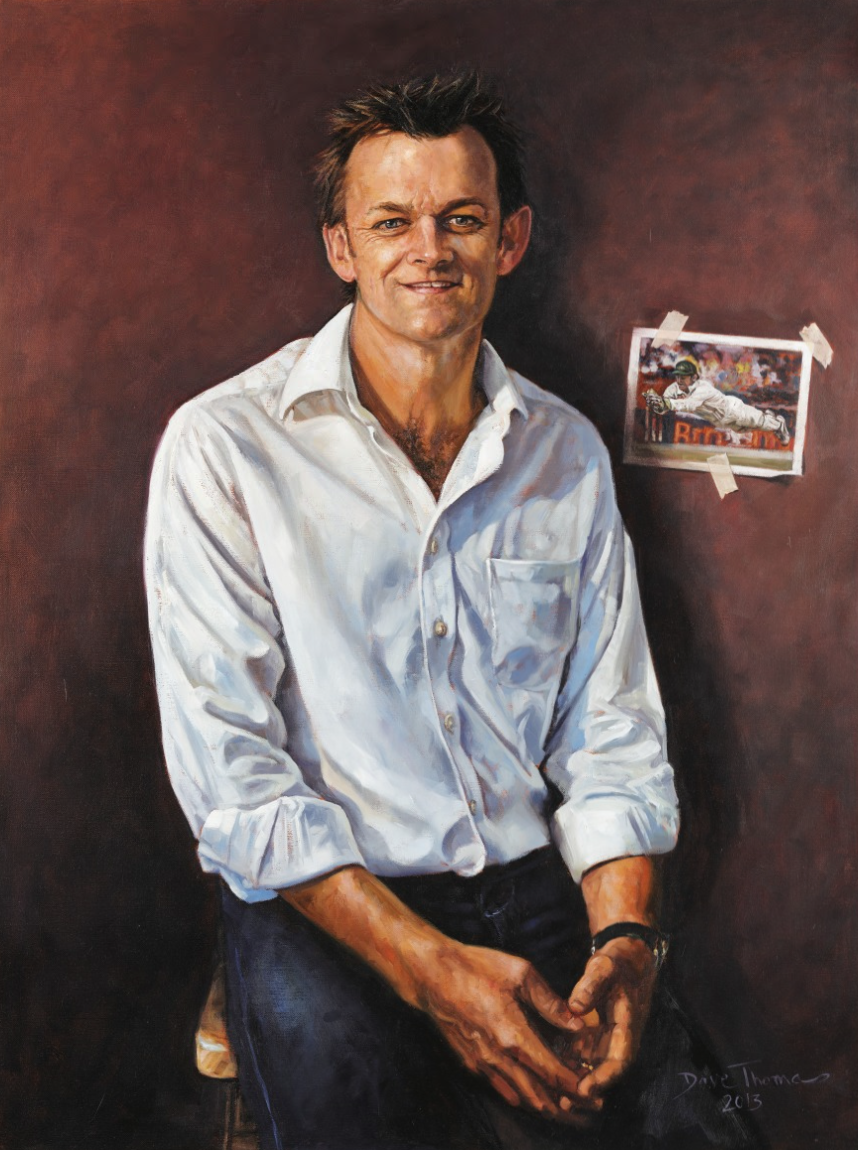Adam Gilchrist
Australia
Wicket-keeper/ batsman
D.O.B 14/11/1971
“A once in a generation cricketer” – Stephen Waugh
Uncomplicated and exhilarating, Adam Gilchrist revolutionised the role of wicketkeeper-batsman.

Adam Gilchrist is the first player to be celebrated in the Greats of the Game series
One of just four players in the Greats of the Game series to have played in all three formats, Gilchrist thrived in each. During a twelve-year international career, Gilchrist owned the number 7 spot in Australia’s Test side, whilst his attacking flair was invaluable at the top of the order in the shorter formats. An endlessly destructive batsman, his wicket-keeping, too, was beyond reproach; he has the most dismissals of any Australian.
The symbolic heart of Australian cricket for the duration of his career, Gilchrist’s affable and innocent nature endeared him to the cricketing public. Famously encouraged as a youngster by his father Stan, to “just hit the ball,” Adam embraced this simple cricketing philosophy to the nth degree. Setting the tone for his career with 81 runs and 6 dismissals on Test debut against Pakistan, he never wavered in his method. From his swashbuckling World Cup winning 149 against Sri Lanka, to his 57-ball Ashes century in Perth, Gilchrist’s flourishing bat swing and enviable power inspired a generation.

One of the most destructive and entertaining players of all time, Gilchrist thrived in both red and white ball formats. (Bradman Archives)
Lethal in front of the stumps, he was more than capable behind them. After taking over from Ian Healy – to that point Australia’s most successful wicket-keeper – Gilchrist had big gloves to fill. And fill them he did. Initially bemoaned as “too tall” he might not have matched the traditional aesthetic for a wicket-keeper, but as with his batting, he made it work. Regularly seen horizontal, diving in front of Shane Warne at first-slip, it was when Warne was at the other end that Gilchrist cemented his legacy as a gloveman. While batsmen all around the world struggled to pick the great leg-spinner, Gilchrist – up to the stumps in faded and sweat stained Baggy Green – ensured that whenever they edged behind or left their crease, they were not granted a second chance. Finishing his career as Australia’s most prolific wicket-keeper, Gilchrist’s duality with the bat and gloves revolutionised the role of wicket-keepers around the world, making him a true cricketing pioneer.

Adam Gilchrist's portrait, painted by Dave Thomas. The portrait hangs in our Museum
Lauded for his exploits within the boundary rope, Gilchrist’s legacy extends well beyond it. Famous for the spirit in which he played the game, he is renowned for ‘walking’ in the 2003 World Cup Semi-Final. Cognisant of his role as a custodian of the game, Gilchrist is rightly proud of the way he played the game: “I was committed to walking,” he said. “Because as a player I had the ability to make the game – in a tiny way – better than when I found it.”
Never one to place his personal achievements – of which there are many – over those of the team, Adam Gilchrist will be remembered not just for his extraordinary run-making and safe hands behind the stumps. Instead, he maintains an enduring legacy for reminding cricket lovers the world over, of the paramount importance of playing the game with integrity, honour and boundless humility.
BY THE NUMBERS:

Remember, you can follow the Greats of the Game series here on Stump to Stump and via the Bradman Museum social media platforms:
Join the cricket network to promote your business and expertise. Make it easy for people to search and find the people and services they need through people they know and trust.
Join the network







